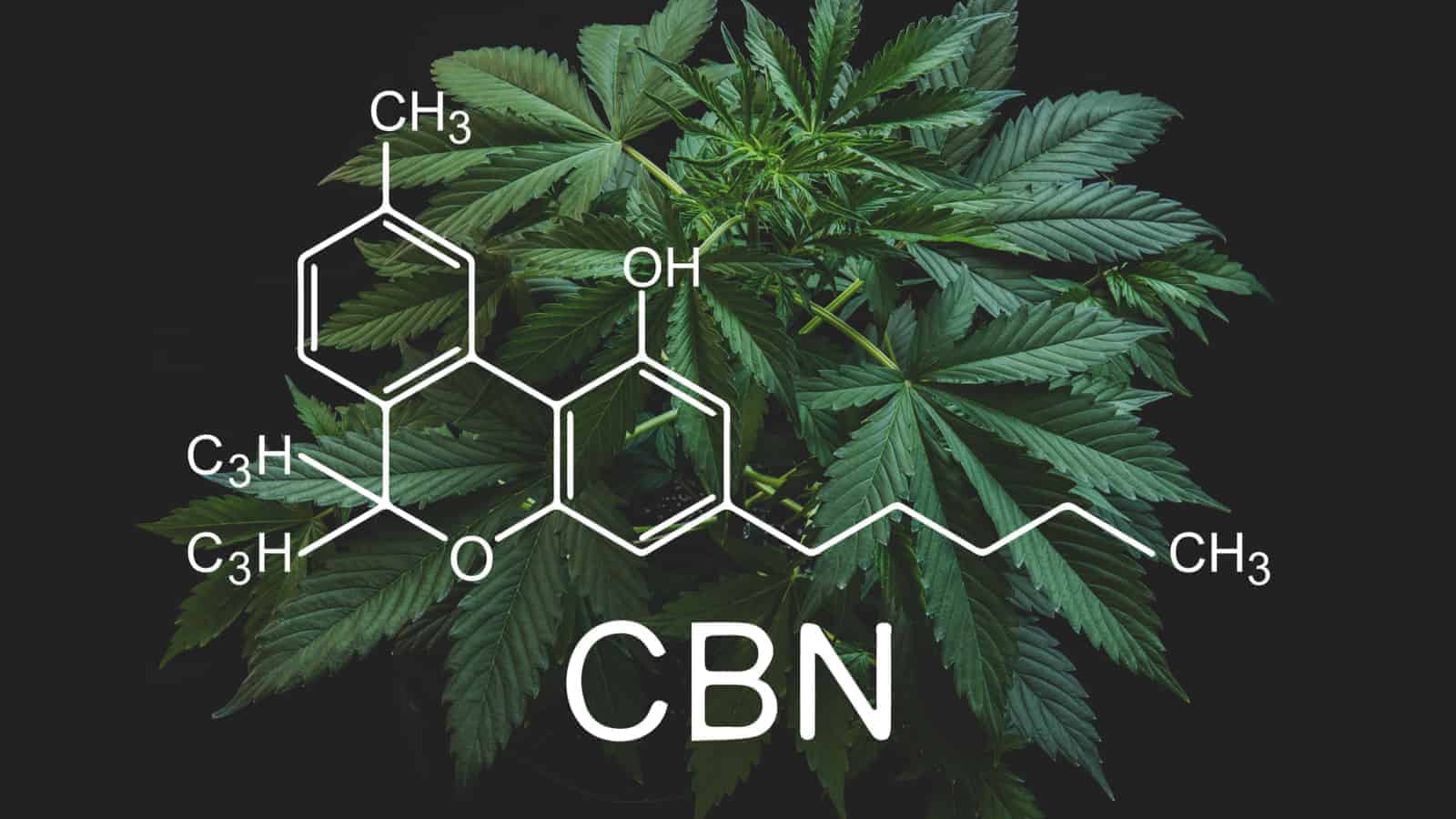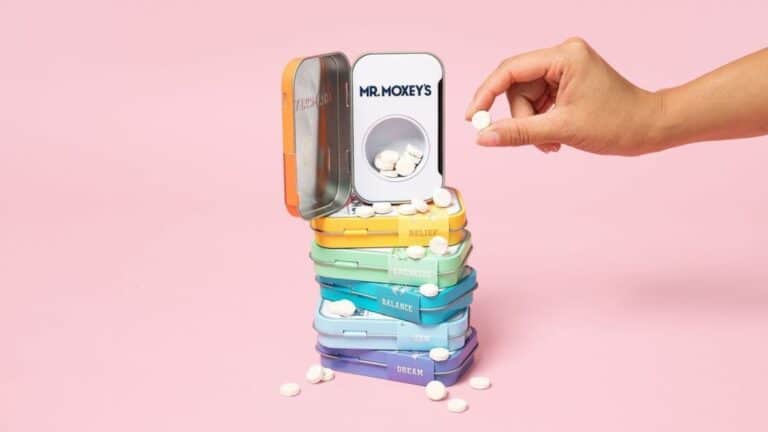If you fancy yourself a cannabis enthusiast, you’ve likely heard plenty about THC – or weed – and CBD. But, if you consider yourself a cannabis aficionado, perhaps you’ve heard about other cannabinoids like CBG and CBN. All of which are found in marijuana strains and hemp.
Each of these compounds is unique to the cannabis plant and present in varying quantities. They also have their own specific uses and focused benefits. So what is CBN? Let’s take a deeper look at this cannabinoid and how it might affect your experience with cannabis.
Overview of CBN
Cannabinol (CBN) is a minor cannabinoid that is produced when THC is exposed to light, heat, and air. Once exposed, the THC begins to oxidize, and that degradation creates CBN. Because of this, CBN is present in very small quantities.
But, the more the THC oxidizes, the stronger the CBN becomes. However, only 10-20% of THC degrades into CBN, which is why CBN oil and flowers are harder to come by. It just simply isn’t widely available due to availability in natural production.
CBN was initially discovered in 1896 and was the first cannabinoid to be isolated. It was originally believed that it was the CBN that caused you to get high until researchers learned more about THC. Unlike other cannabinoids, CBN is produced by environmental factors, rather than genetics.
Although CBN is a derivative of THC, it does not come with the same psychotropic high. However, some studies show that the combination of THC and CBN results in a more sedating high than just consuming THC or CBN alone.
Benefits
Since CBN works so well with THC to provide sedative effects, there has been some confusion about whether or not CBN should be cataloged as the “sleep” cannabinoid. Research shows that THC can produce drowsiness on its own, but those effects are amplified with the addition of CBN. This led some people to believe that it was the CBN causing sleepiness, but it’s more likely that it is the combination of the two.
Just as CBN works well with THC to promote deeper sleep, it also works well with CBD. When consumed together, CBD and CBN act as pain relievers, particularly for inflamed joints. Other known benefits of CBN include appetite stimulation, neuroprotective effects, and pain relief related to temporomandibular disorders and fibromyalgia.
As of now, we need more research to fully understand the potential benefits of CBN when used alone.
Uses
Since CBN is created through THC, there are currently no known strains considered extremely high in CBN. For this reason, CBN is often expensive and difficult to come by. However, some specialty producers create CBN-specific products in the form of topicals, tinctures, capsules, and vape products.
Cannabis consumers choose different formats for their unique uses. For example, a tincture is a fast-acting option for anyone looking to consume CBN (and other cannabinoids) discreetly.
Possible Side Effects
The research around CBN is still very new, and there is much to learn about this cannabinoid. Unfortunately, there are no conclusive side effects to issue a caution about, but this doesn’t mean that there aren’t any.
To stay safe, assume that the overconsumption of CBN may result in the same side effects of overconsuming any cannabinoid: nausea, dizziness, vomiting, or diarrhea. Always start with a small dose and increase dosage gradually as you become comfortable with the effects.
Cannabinol and The Endocannabinoid System
CBN is a cannabinoid that occurs naturally in the cannabis plant, although it must be exposed to the above-listed environmental factors to become active. Therefore, by the time you are consuming cannabis, the CBN is already present.
As with all cannabinoids, CBN works with the body’s endocannabinoid system (ECS) to produce its effects. The ECS is responsible for modulating many critical bodily functions to keep a state of homeostasis. Appetite, mood, digestion, sleep, hormone regulation, and immune function are just a few of the systems that the ECS regulates.
While the body produces its own cannabinoids, the receptors in the ECS also work like locks and keys with the cannabinoids found in cannabis. There are two types of receptors in the ECS — CB1 and CB2. The CB1 receptors work with the brain and nervous system, and the CB2 receptors work with the immune system and gastrointestinal tract. CBN tends to show a higher affinity for the CB2 receptors.
Researchers believe that while cannabinoids can act alone to produce effects, a phenomenon called the entourage effect occurs when they work together. This means that each cannabinoid helps to amplify the effects of the others, and in combination with terpenes and other compounds, produces the maximum benefits of the plant.
So, if you want to tap into the most beneficial effects of cannabis, it’s best to consume it in its whole form, or in a concentrated form, like CBN oil. If you are a fan of CBD oil, try some CBN oil next time you make a dispensary run.
CBN vs. CBD: What’s the Difference?
Both CBD and CBN can come from hemp or marijuana and are non-intoxicating cannabinoids. While they tend to get lumped into the same category as non-psychotropic cannabinoids, they do have some distinct differences in addition to their similarities.
Chemical Composition
CBD is a derivative of CBGA, and so is THC. But CBN is one step further down the molecular ladder since it is formed when THC breaks down.
Therapeutic Effects
CBD and CBN share many medicinal qualities and can even enhance each other’s effects via the entourage effect. Neither produces a high by itself, but they do interact in opposite ways when paired with THC. For example, CBD is known to bring down or lessen the psychoactive effects of THC.
Whereas, CBN seems to enhance or increase those effects. However, the addition of CBN with THC will result in a more sedating high rather than one that might lead to anxiety or paranoia.
Legal Status
Since CBN forms when THC oxidizes, this is a bit of a gray area. For any state with a legal recreational cannabis program — or for patients with medical marijuana cards — CBN (and THC) are perfectly legal in controlled amounts.
If the CBN is from a hemp plant, then it is legal nationwide so long as the final product contains less than 0.3% THC. However, since hemp contains such little quantity of THC (and its derivative, CBN), almost all CBN oil is derived from marijuana.
Final Thoughts
As research evolves, we are hopeful that CBN becomes more readily available to the public with scientifically backed results. Cannabis science is still relatively new and the use cases for each precious cannabinoid are still largely unknown. Fortunately, laws are shifting to allow for more dedicated funding and research of this miraculous plant, and soon, we might be living in a world where cannabis medicine is accessible to everyone.



![[NJ] The Easiest Ways to Buy Weed in Buffalo A Full Guide (5)](https://neonjoint.com/wp-content/uploads/NJ-The-Easiest-Ways-to-Buy-Weed-in-Buffalo-A-Full-Guide-5-768x432.jpg)


